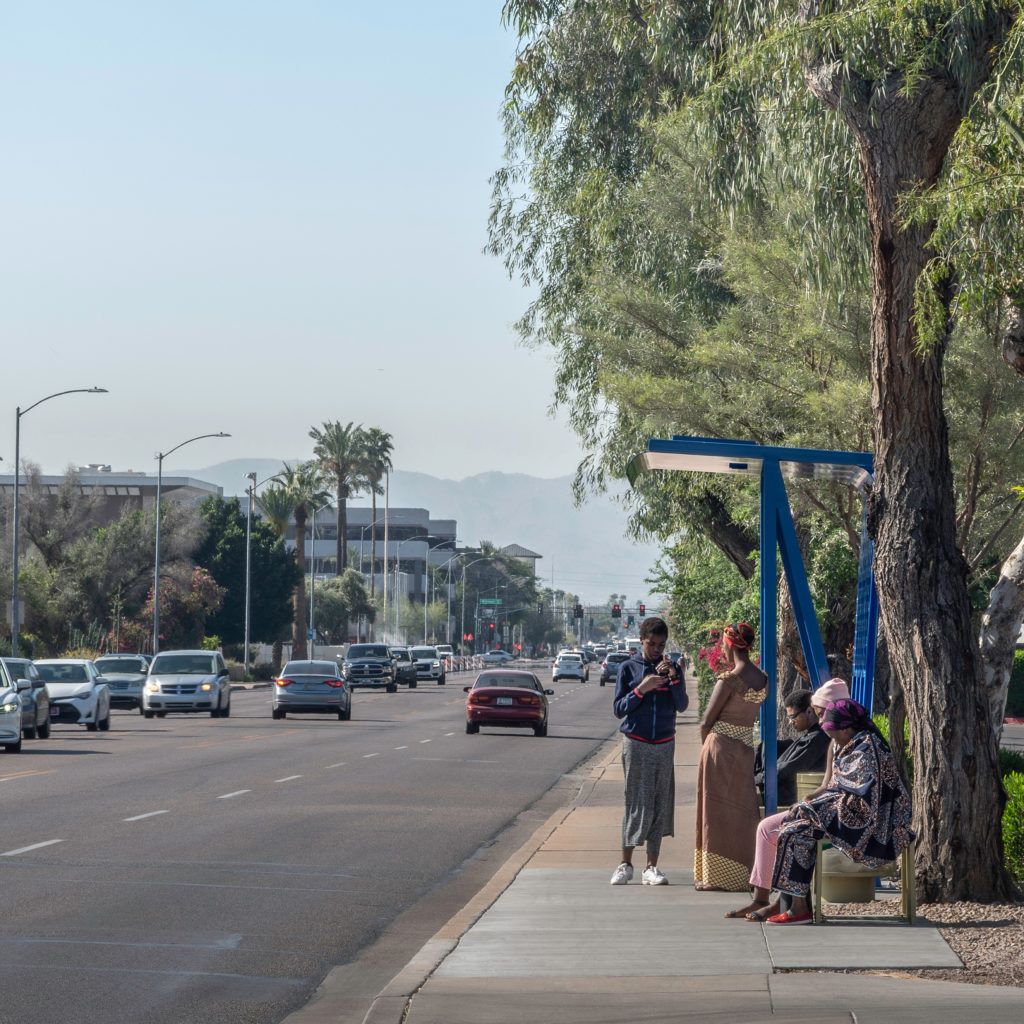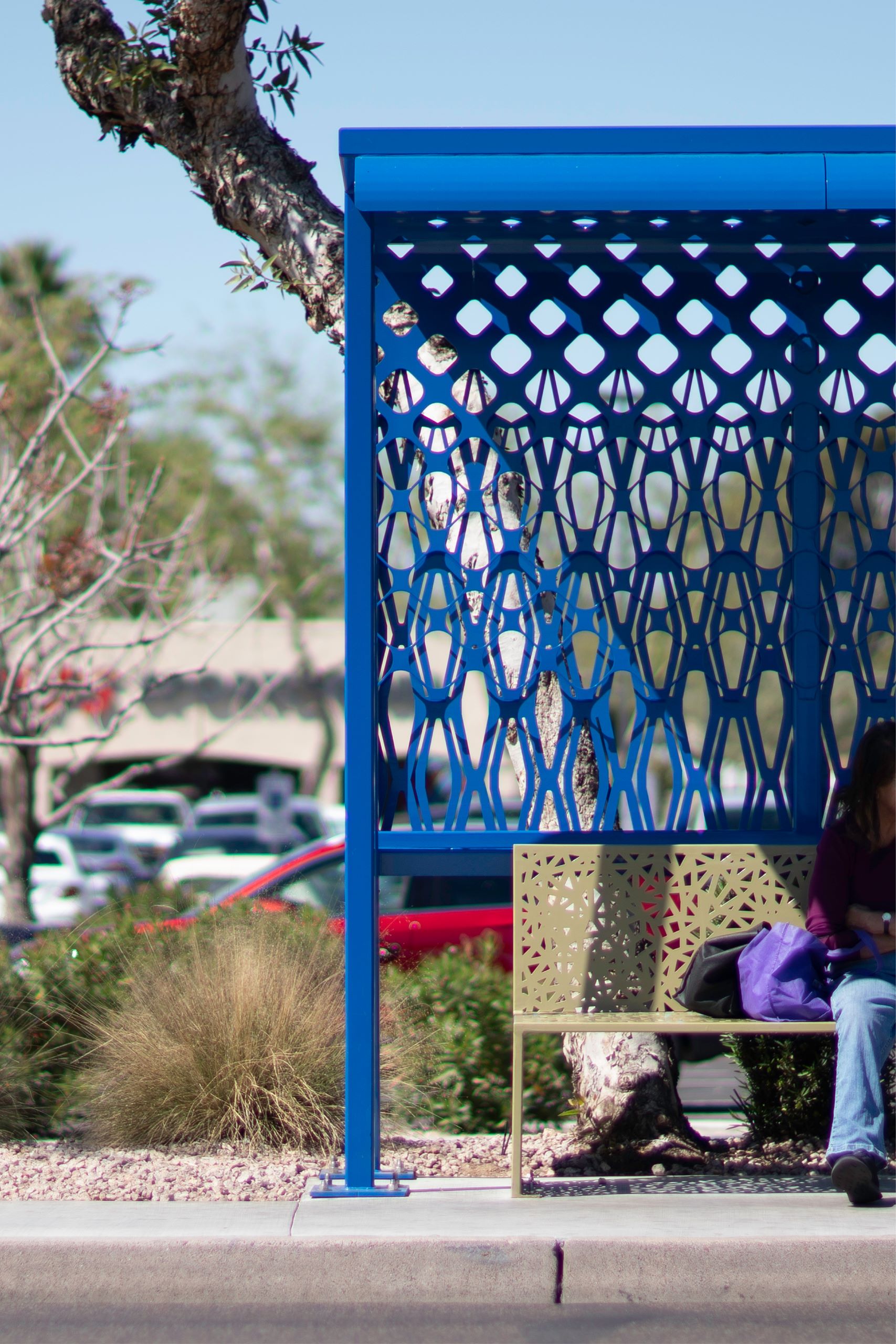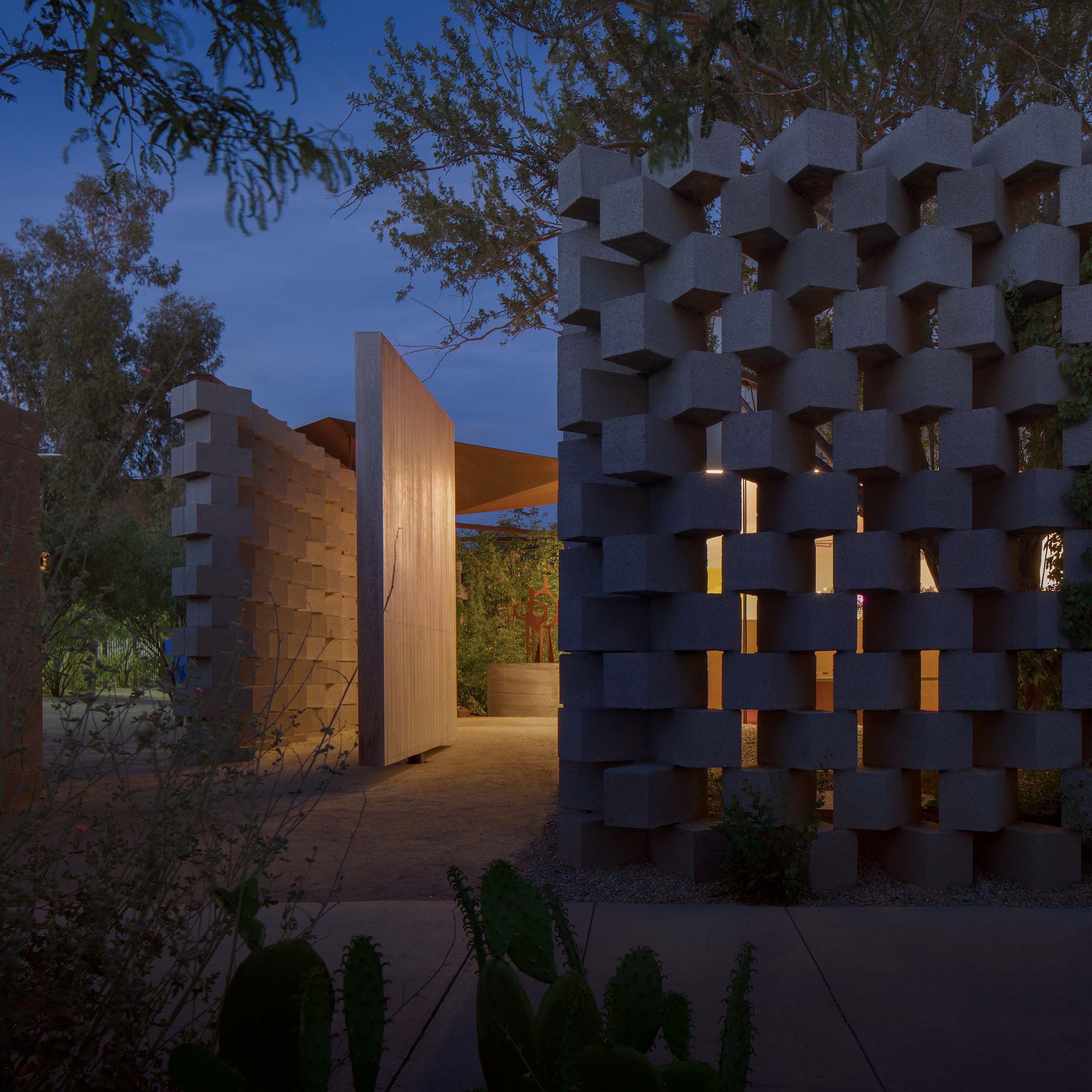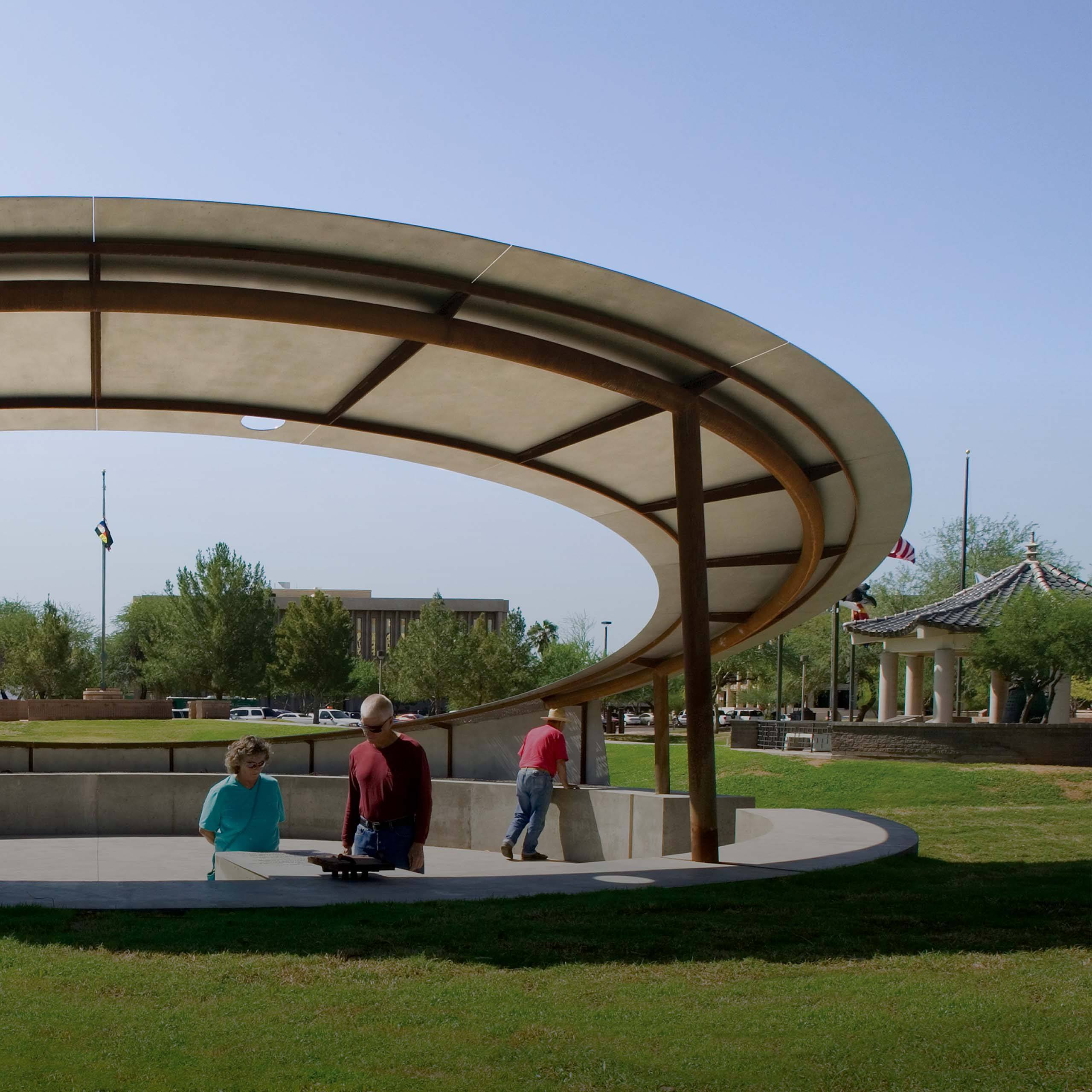
“Sew-cial” 16th Street + Bethany Home Road Public Art & Bus Shelters
Elevating everyday infrastructure into art
Client
City of Phoenix
Location
Phoenix, Arizona
Size
750 linear ft
Expertise
Public, Cultural
Project Team
Faced with a trend of rising street violence in their neighborhood, residents and local business owners around 16th Street and Bethany Home Road in Central Phoenix sought ways to make their community safer through a more vibrant public streetscape. Shared spaces in the public realm like street furniture—typically mundane, utilitarian elements—could be reimagined to inspire the community through public art.
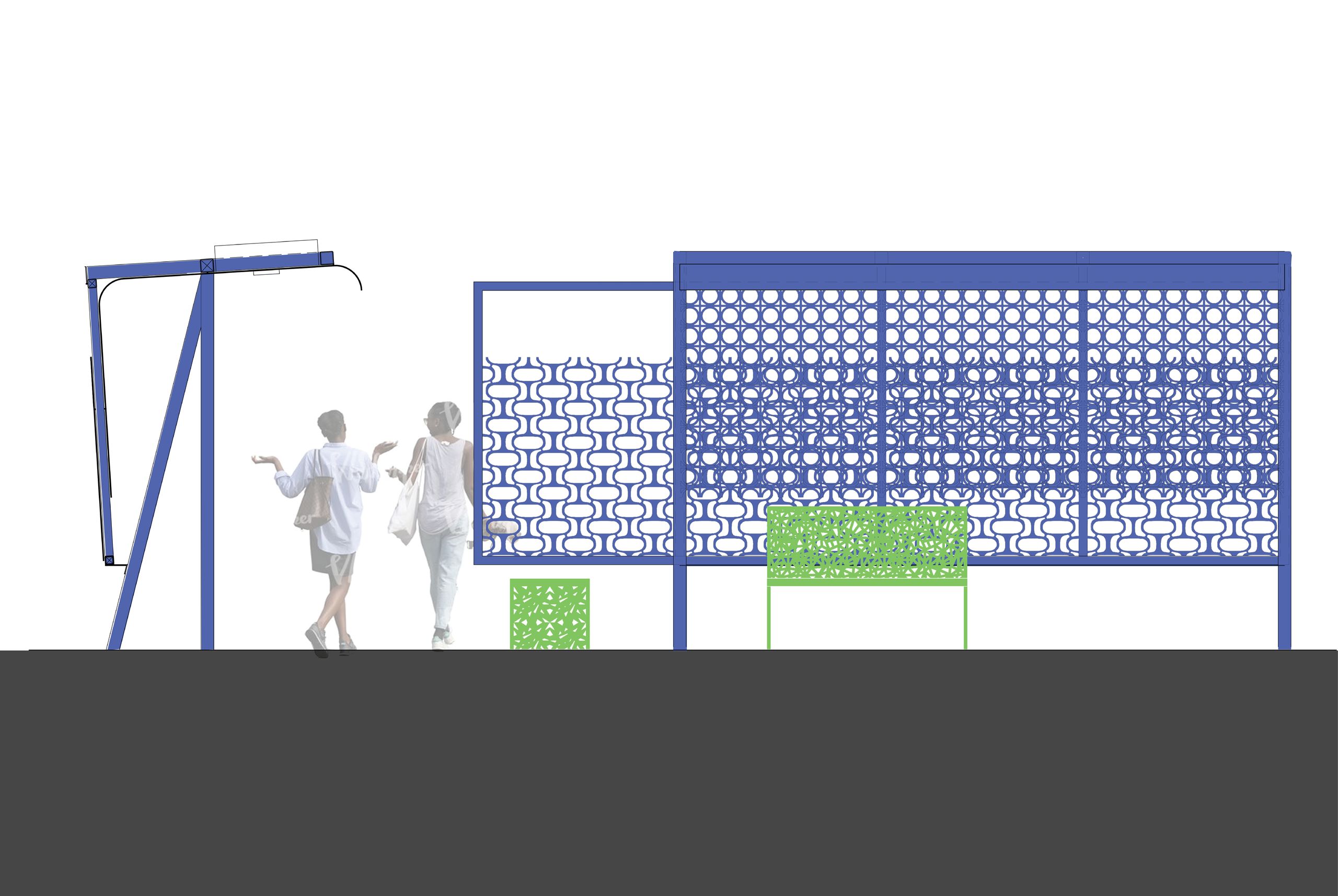
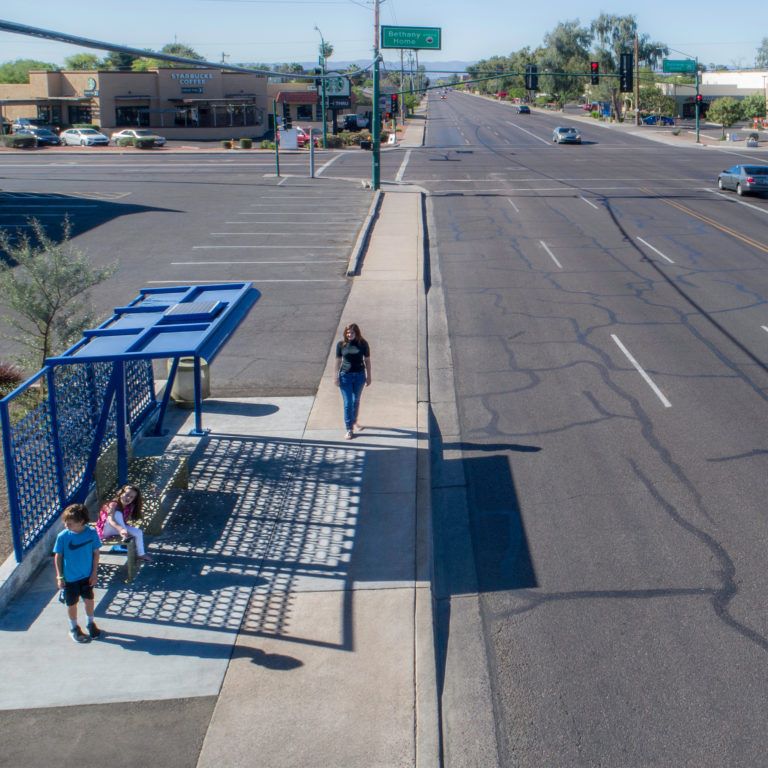
Using the modest budget provided by a city neighborhood grant program, Jones Studio worked with community leaders as well as the City of Phoenix’s Public Transit and Neighborhood Services departments, the Office of Arts and Culture, and the Federal Highway Administration to create bus shelters integrated with patterns tied to the neighborhood’s history. Through this focus on community identity and placemaking, the new streetscape instills a sense of communal ownership of the public realm.
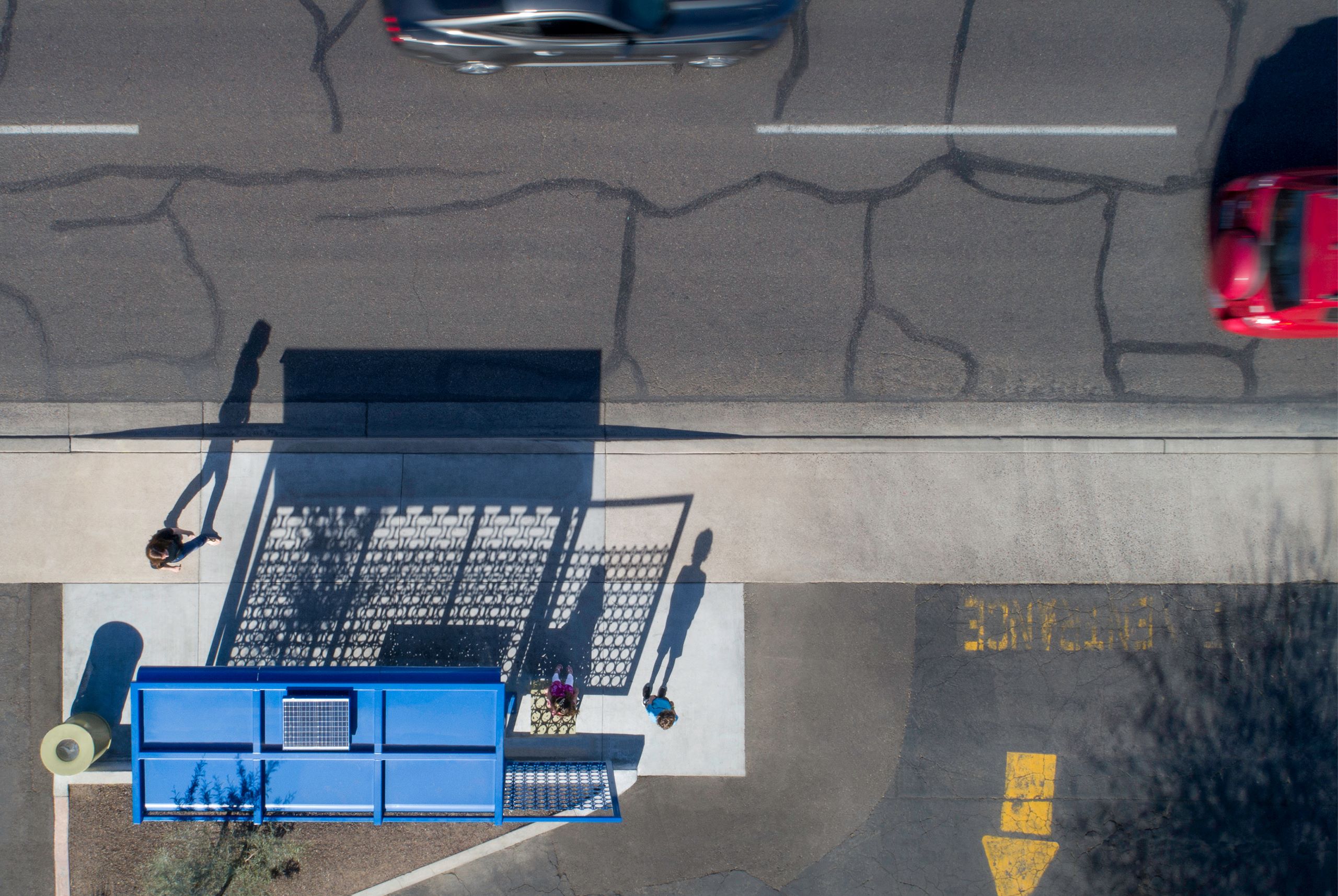
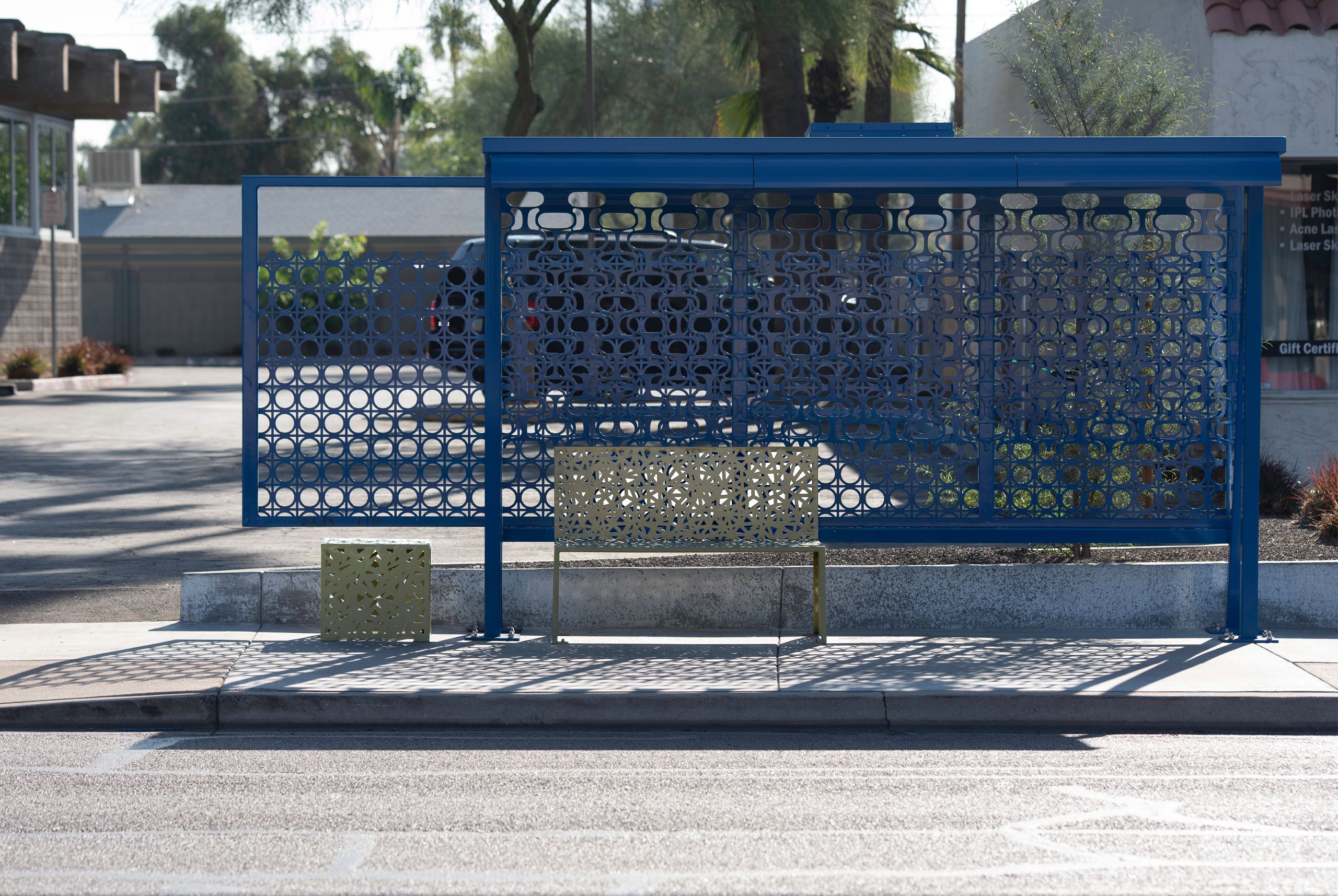
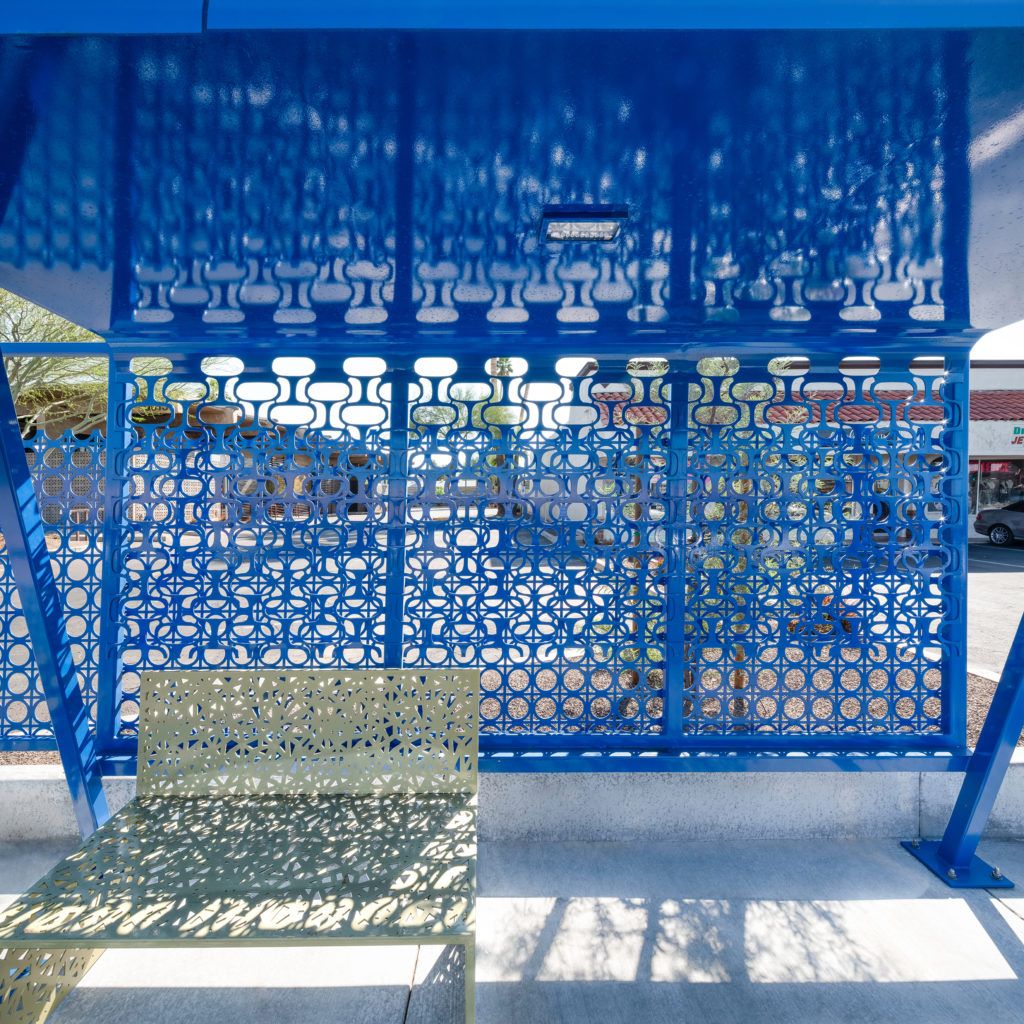
The design draws inspiration from the geometric patterns of the neighborhood’s unique mid-century modern homes. These diverse, iconic patterns—seen in fashion, textiles, and industrial design of the era—found their way into the neighborhood through the homes designed by local architect Ralph Haver and his contemporaries of the 1940s, 50s, and 60s.
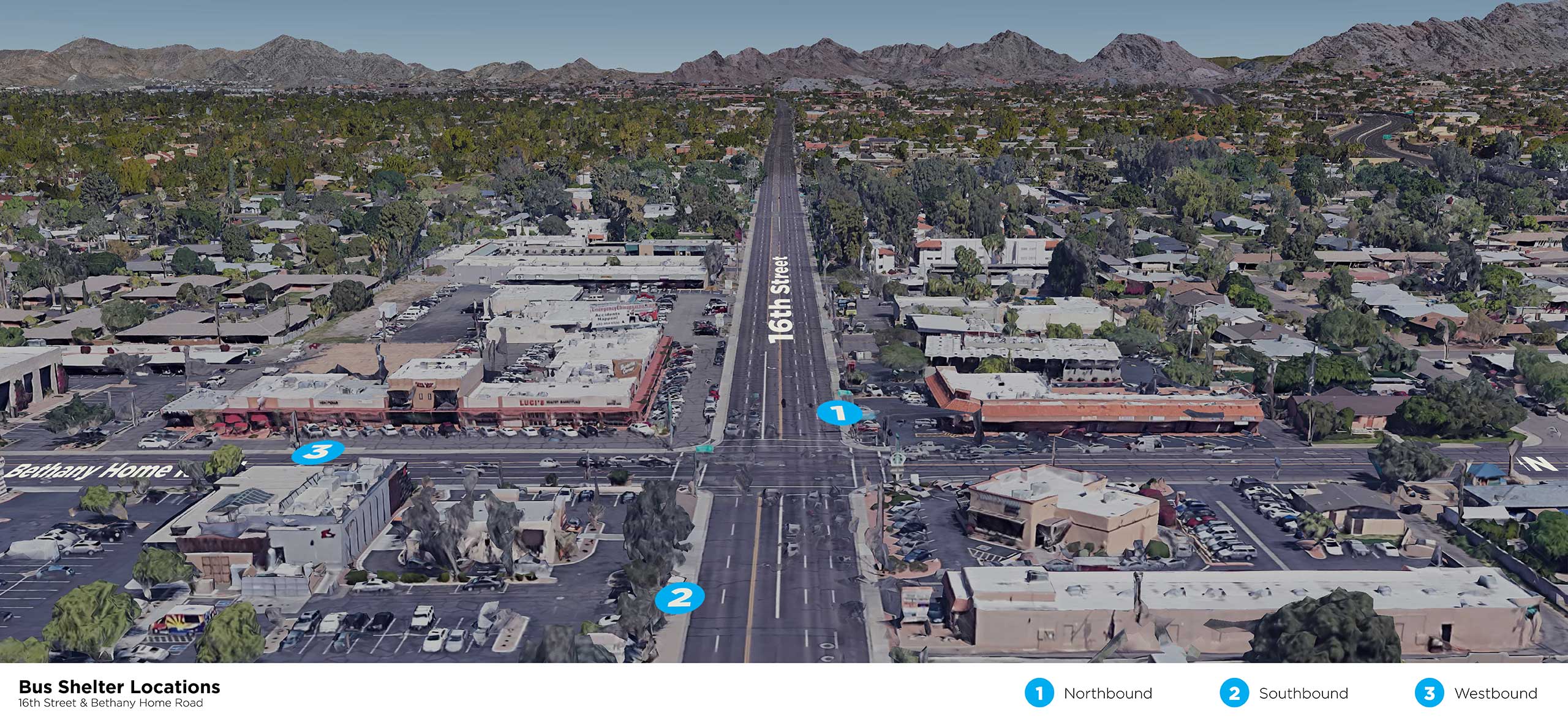
These patterns were morphed, layered, and reinterpreted into a new set of patterns wrapping the bus shelters to have an immediate visual impact. Painted a vibrant blue, the shelters are instantly recognizable to transit riders and a point of pride for neighborhood residents and local businesses, with symbolism rooted in the history of their place.
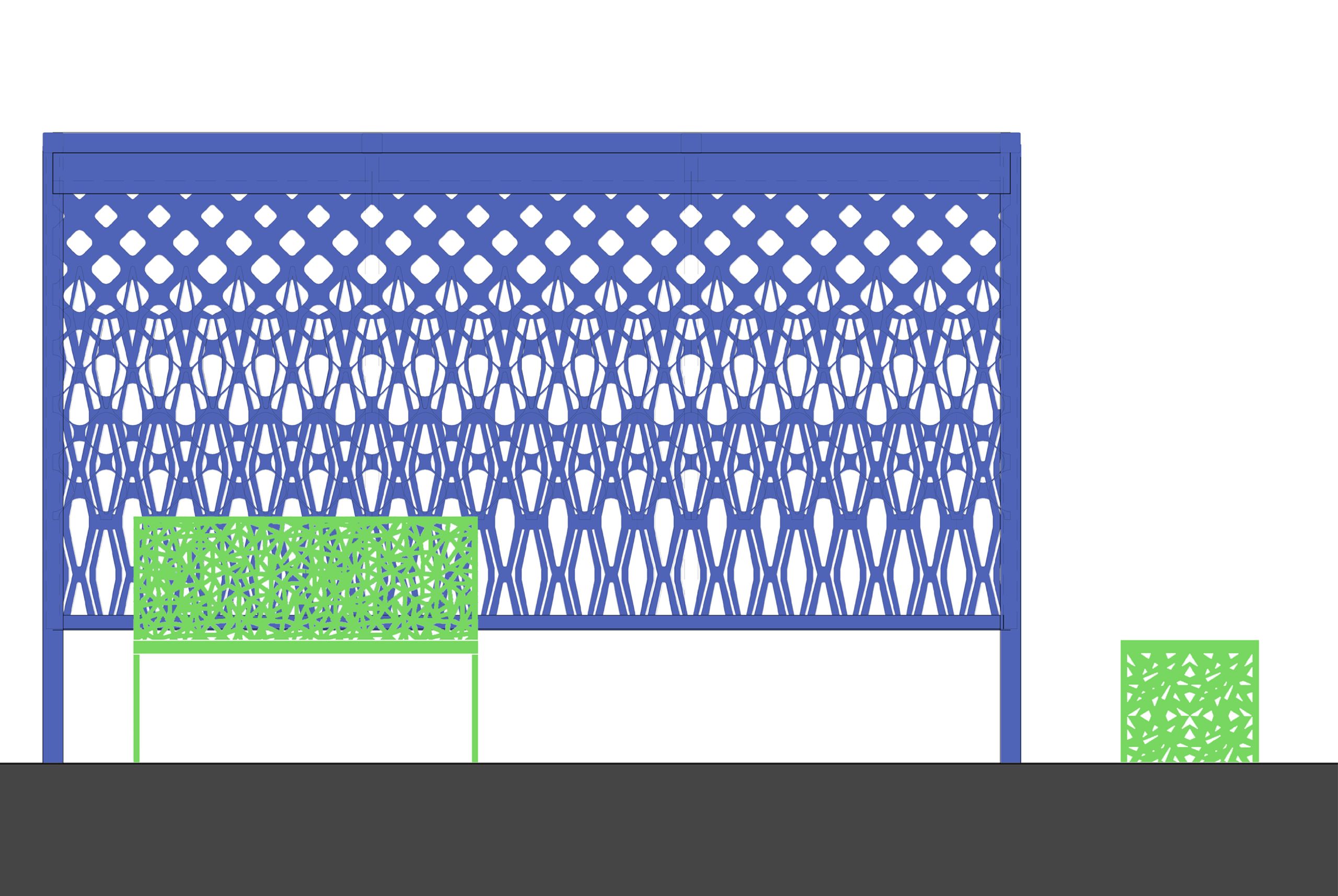
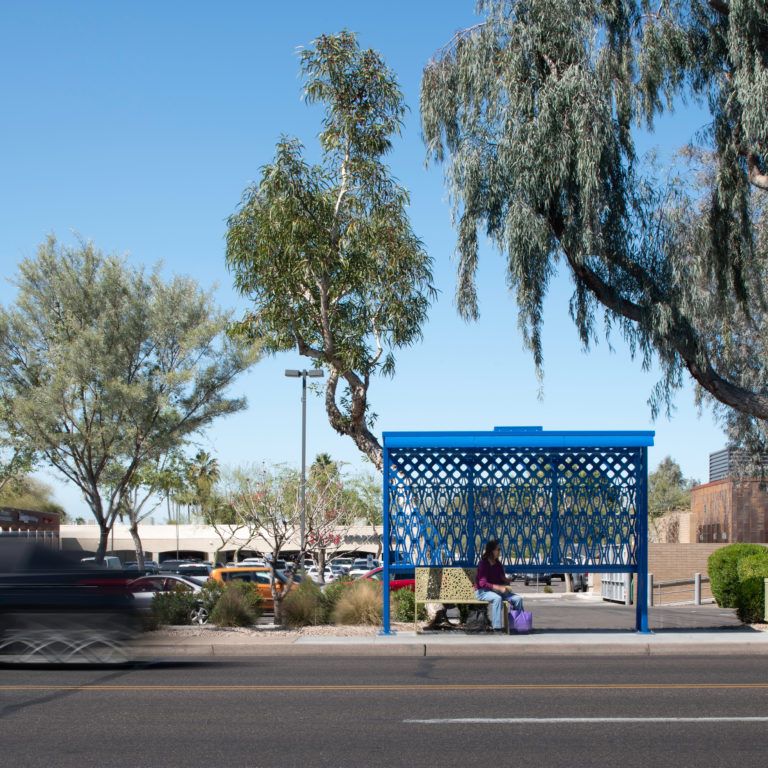
From dawn to dusk, the bus shelters and street furniture are animated by the changing light of the day. Light shimmers softly through the layered patterns while sheltering users from the desert sun. They cast the shadow of the compiled patterns across the sidewalks and streets, weaving together the streetscape of the neighborhood with the iconography of its history.
